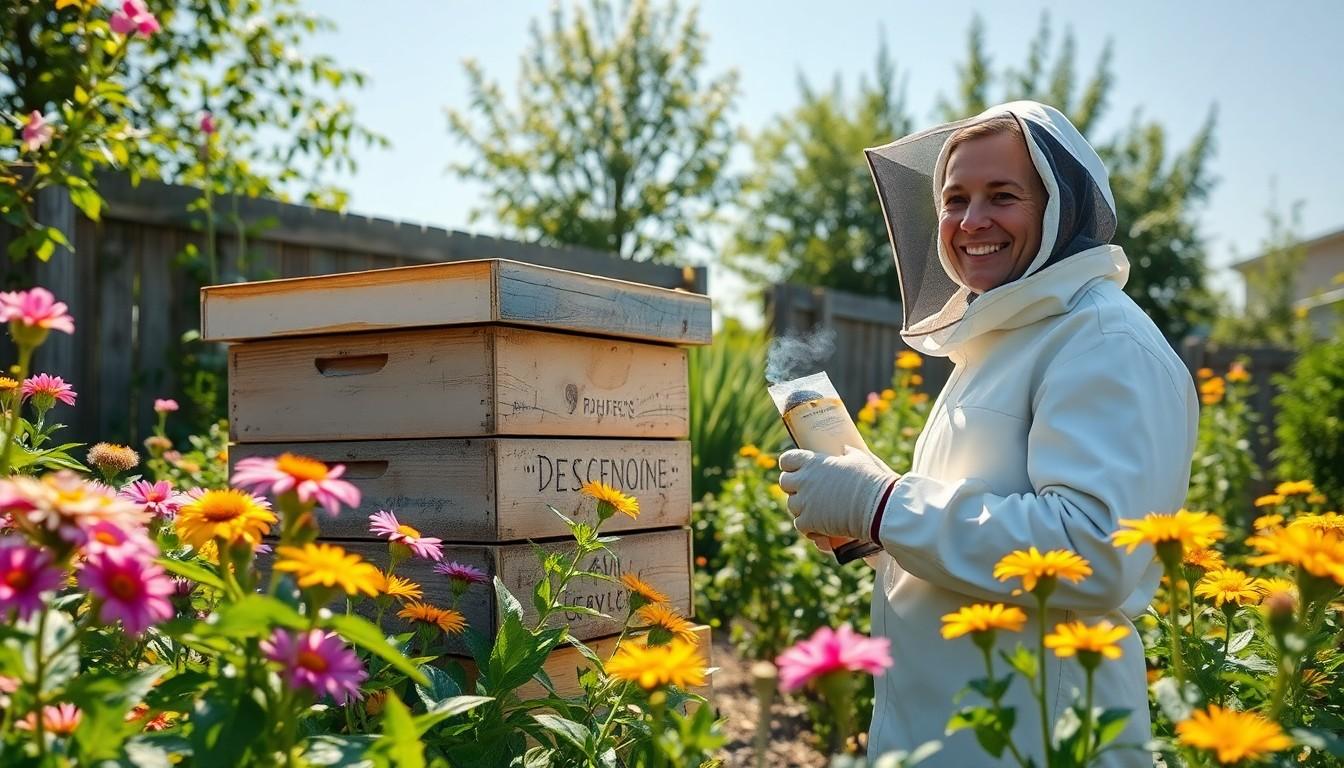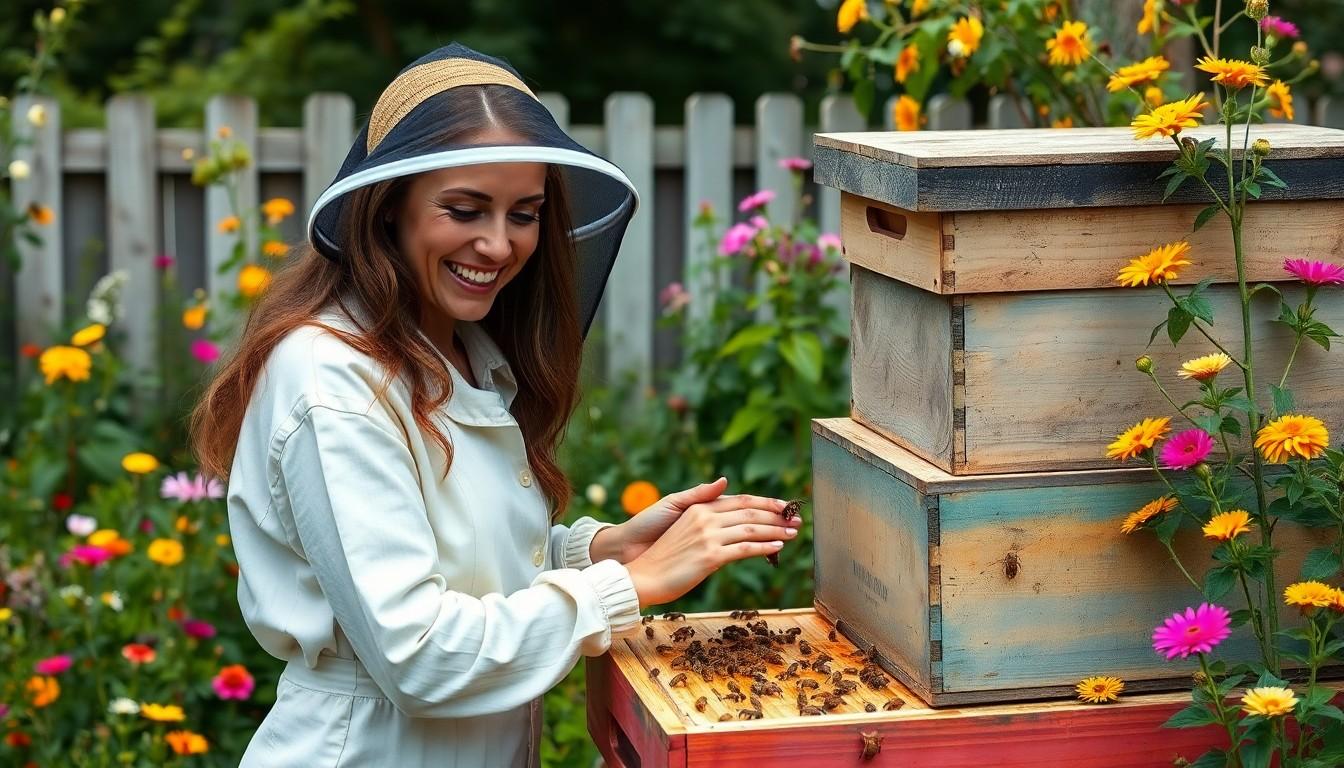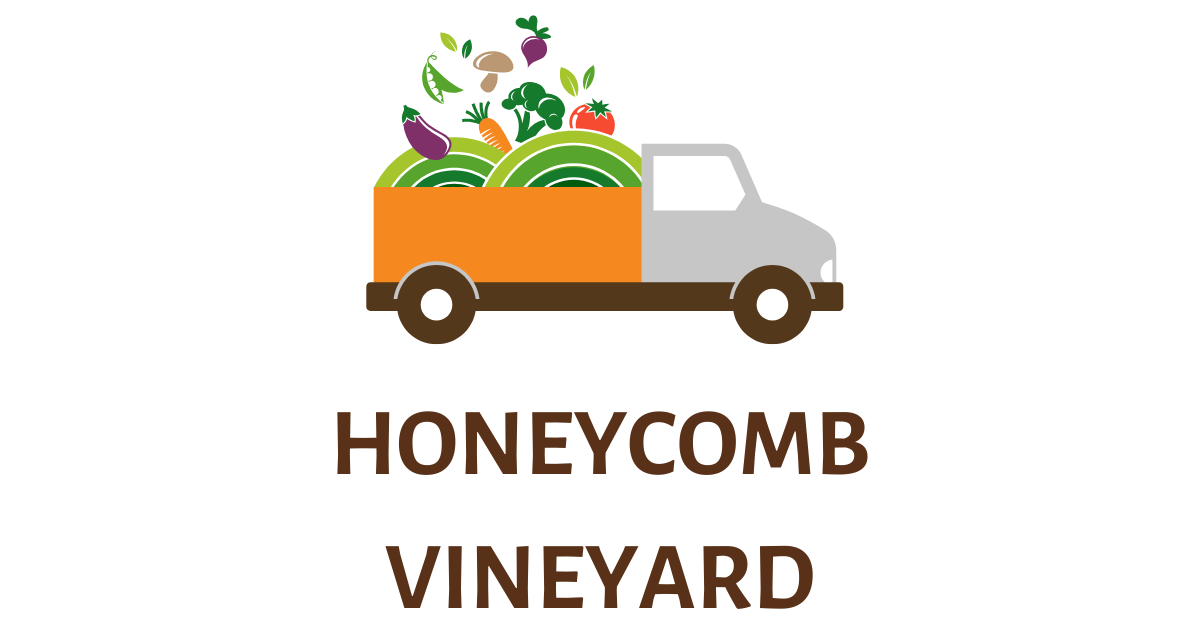The Best Fluffy Pancakes recipe you will fall in love with. Full of tips and tricks to help you make the best pancakes.

Backyard Beekeeping: Unlock the Sweet Benefits of Honey and Eco-Friendly Living
Imagine stepping into your backyard and being greeted by the gentle buzz of bees hard at work. Backyard beekeeping isn’t just a hobby; it’s a ticket to a world of sweet rewards, both in honey and in the joy of nurturing nature. With the right setup, anyone can transform their outdoor space into a thriving hive, making them the proud parent of thousands of buzzing buddies.
Backyard Beekeeping
Backyard beekeeping serves as an engaging pursuit for individuals wanting to contribute to local ecosystems. With a modest investment in equipment and knowledge, anyone truly interested in beekeeping can maintain healthy bee colonies. Honeybees play a vital role in pollination, ensuring fruit and vegetable plants thrive in gardens.
Starting out requires selecting the right location for a beehive. Choosing a sunny and sheltered area can enhance hive productivity while minimizing disturbance from wind and predators. The hive’s placement should also ensure accessibility for regular maintenance and honey collection.
A proper setup includes basic equipment like a beehive, protective gear, and tools for handling bees. Most hobbyists start with Langstroth hives, known for their efficiency and ease of management. Protective gear ensures safety while working around the bees, preventing stings and minimizing anxiety.
In addition to equipment, education is crucial. Resources, such as books, online courses, and local beekeeping clubs, provide valuable insights into bee behavior and management techniques. Many experienced beekeepers benefit from networking with peers who share knowledge and best practices.
Committing to a beekeeping journey involves understanding seasonal changes that impact bee health. Monitoring the hive during winter is essential, as bees need sustenance, especially in colder climates. During spring and summer, beekeepers can expect increased activity, making it the prime time for hive inspection and honey harvesting.
Success in backyard beekeeping results from consistent care and attention. Beekeepers should regularly check for signs of disease or pest infestations, maintaining a healthy environment for the bees. Encouraging biodiversity by planting bee-friendly plants supports local bee populations and fosters a thriving backyard ecosystem.
Benefits of Backyard Beekeeping

Backyard beekeeping promotes numerous advantages that enhance the environment and provide personal fulfillment. Engaging in this activity yields both ecological and emotional rewards.
Environmental Impact
Backyard beekeeping plays a crucial role in supporting local ecosystems. Pollinators, such as bees, contribute to the growth of numerous plants, helping to sustain biodiversity. Healthy bee colonies enhance pollination for fruits, vegetables, and flowers, which benefits entire gardens and landscapes. A thriving bee population often leads to increased food production, assisting local farmers and contributing to food security. Additionally, raising bees in urban and suburban areas fosters awareness about environmental issues and the importance of pollinators. Practicing this hobby leads to improved habitats for bees while encouraging others to plant bee-friendly flowers and plants.
Personal Enjoyment and Satisfaction
Personal enjoyment significantly increases with backyard beekeeping. Caring for bees encourages a connection to nature, promoting stress relief and enhancing mental well-being. Savoring fresh honey straight from the hive provides a unique taste experience, enriching culinary adventures. Observing the fascinating behavior of bees offers endless learning opportunities and sparks curiosity. Individuals often find immense satisfaction in nurturing these essential creatures. Maintaining a healthy hive brings a sense of accomplishment and pride, especially when sharing honey with friends and family. Engaging in this fulfilling hobby cultivates a deeper appreciation for the environment and contributes to personal growth.
Getting Started with Backyard Beekeeping
Backyard beekeeping requires specific tools and knowledge to succeed. A few key items form the foundation for a thriving hive.
Essential Equipment
Essential equipment includes a beehive, protective gear, and tools. Beginners often choose Langstroth hives for their user-friendly design. Protective gear such as gloves and veils safeguards beekeepers from stings. Smokers help calm bees during inspections, minimizing stress for both bees and keepers. Hive tools allow for easy manipulation of frames and maintenance tasks. Beekeeping suits provide full-body protection, enhancing comfort while working. Starting with basic equipment sets a solid foundation for expanding the beekeeping venture.
Choosing the Right Bees
Choosing the right bees makes a significant difference in backyard beekeeping. Common options include Italian, Carniolan, and Russian bees, each with distinct characteristics. Italian bees are known for their calm nature and strong honey production. Carniolan bees adapt well to temperature changes, offering resilience in various climates. Russian bees exhibit natural resistance to varroa mites, promoting overall hive health. Selecting local bee strains often leads to better survival rates and successful pollination. Researching the best options before acquiring bees ensures a productive beekeeping experience.
Maintenance and Care for Bees
Ensuring proper maintenance and care for bees is essential for a thriving backyard hive. Regular inspections help beekeepers monitor hive health and productivity.
Regular Hive Inspections
Start hive inspections at least once every week during the active season. Check for adequate food supply, brood patterns, and signs of pests or diseases. Inspect queens to ensure active laying and brood development. Monitor the overall population to identify any declines that may indicate issues. Document findings to track hive performance over time. Timely interventions often prevent more significant problems later.
Managing Pests and Diseases
Addressing pests and diseases promptly is crucial for bee colony health. Varroa mites represent one of the most significant threats, so regularly monitor for their presence. Utilize integrated pest management strategies, such as the use of screened bottom boards and powdered sugar dusting to control mite levels. Fungal infections like chalkbrood can be managed with proper hive ventilation and hygiene. Additionally, maintaining healthy colonies through proper nutrition and genetic diversity helps reduce disease susceptibility. Regular assessments and proactive measures ensure strong and resilient bees.
Harvesting Honey
Harvesting honey requires careful timing and knowledge of bee behavior. Wait until the honey supers are at least 80% capped before extraction. Capped honey signifies maturity and optimal moisture content, making it ready for harvest. Check for moisture levels in honey, as a range below 18.6% helps prevent fermentation.
Gather necessary equipment, such as an uncapping knife, honey extractor, and food-safe buckets. Remove frames gently to avoid disturbing the bees. Use a smoker to calm the bees during the extraction process. Smokers generate smoke that masks alarm pheromones, allowing for safer harvesting.
Uncap honeycomb cells with a heated uncapping knife. Heat helps facilitate the removal of the wax caps. After uncapping, place frames in a honey extractor. Centrifugal force extracts honey from the cells without damaging the frames.
Collect honey in food-safe buckets, ensuring all tools are sanitized beforehand. Filter the honey to remove impurities, including wax particles and bee debris. Use a mesh strainer or cheesecloth for effective filtering.
Store honey in glass jars or food-grade buckets. Label each jar with the harvest date for easy identification. Proper storage conditions enhance honey longevity, while cool, dark locations prevent crystallization.
Enjoy the fruits of labor by tasting fresh honey. Share it with family, friends, and neighbors, enhancing the sense of community. Harvesting honey becomes not just a rewarding process but a celebration of successful beekeeping.
Enjoy the Sweet Rewards
Backyard beekeeping offers a unique opportunity to connect with nature while making a positive impact on local ecosystems. By cultivating a thriving hive, individuals not only enjoy the sweet rewards of fresh honey but also contribute to biodiversity and food production.
With the right tools and knowledge, anyone can embark on this fulfilling journey. Regular hive inspections and proper pest management ensure colony health, while educational resources and community support enhance the experience.
Ultimately, backyard beekeeping is more than just a hobby; it’s a chance to nurture the environment and cultivate personal growth through the art of beekeeping.
